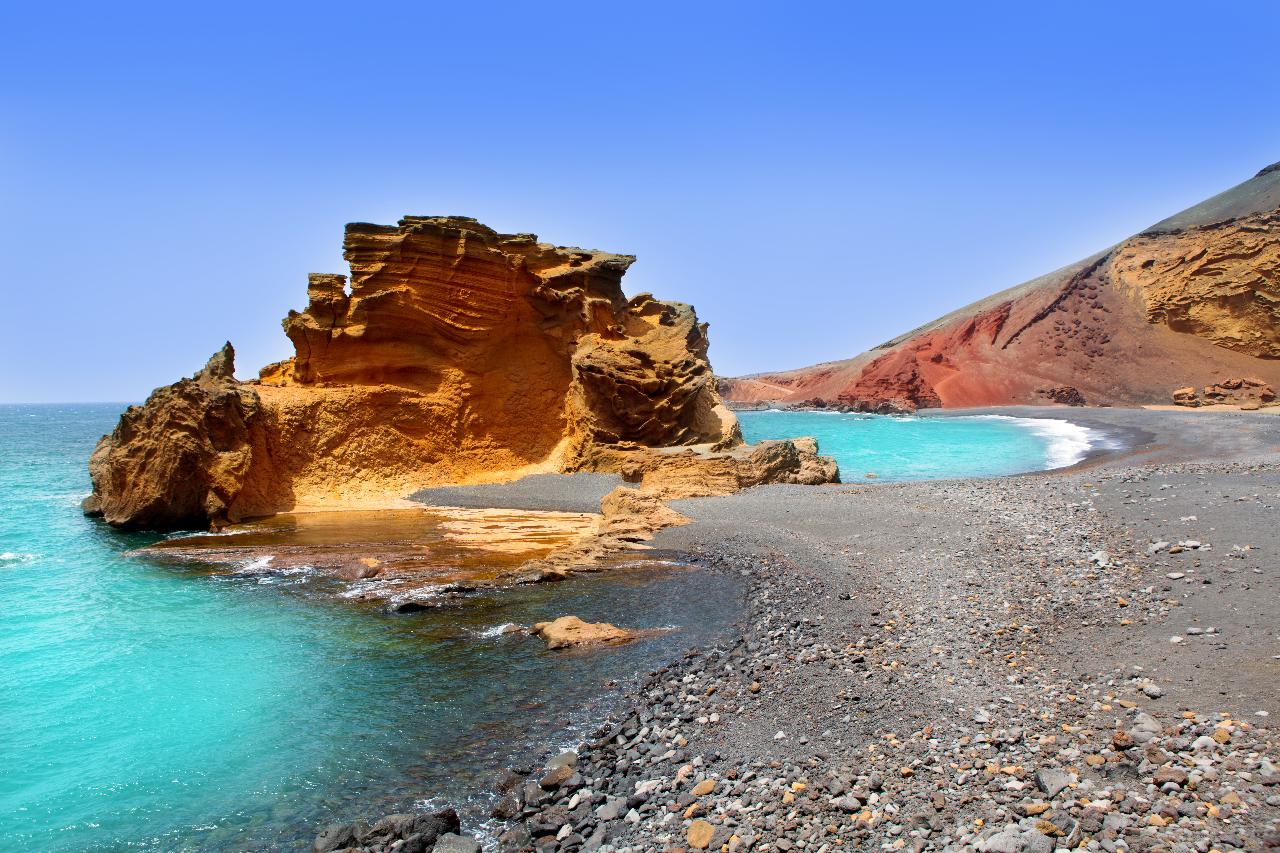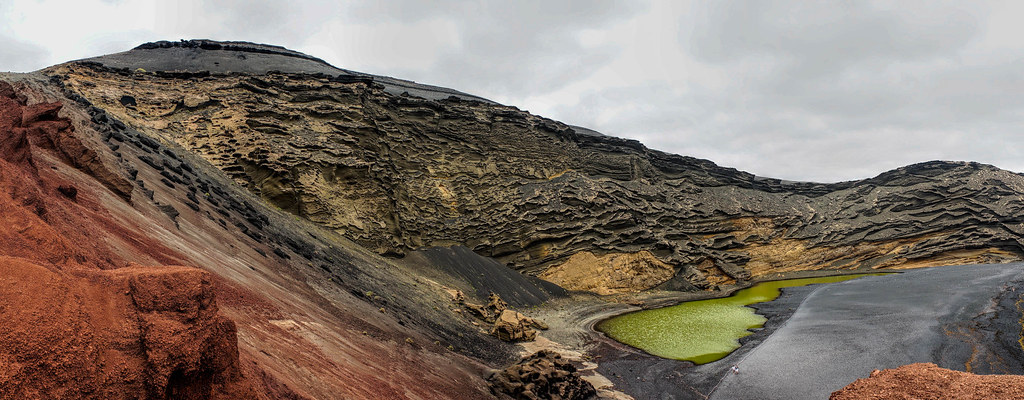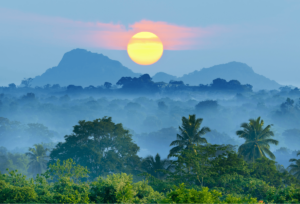
As one of the Canary Islands, Lanzarote is known for its dazzling beaches and fantastic food. El Golfo is a treasure that combines both, in addition to being home to something even more special: Lago Verde, the Green Lagoon.
What is it?
Going by many names — El Charco Verde, Lago Verde, Charco de los Clicos or Laguna de los Clicos — this Lagoon is situated close to El Golfo on the west coast of Lanzarote, within the Timanfaya Natural Park. The various names are derived from two aspects of the Lagoon; Verde meaning green, referring to the vibrant colour of the water, whilst de los Clicos (of Click) refers to an extinct shellfish that was once farmed in the area. The Lagoon rests in the lip of a semi-circular crater left by the extinct volcano Montaña de Golfo. The other half of the crater has been eroded by the sea.The crater is a result of a rare phenomenon where magma and water combine to create an incredible landscape. The sea bay is covered with lava sand, and you may be lucky enough to stumble across some semi-precious stones, such as olivine, known for its lime green colour. Look carefully, as they may be hidden within some of those ordinary black lava rocks! The Lagoon is a curiously vibrant jade green which contrasts with the black volcanic sand. It provides some fantastic photographic opportunities and has been the location for several films, such as the classic 1966 movie ‘One Million Years B.C.’ starring Raquel Welch, and a well-received Spanish film ‘Broken Embraces’ starring Penélope Cruz. It’s a must-visit for those who want to see the natural wonders of the world, being a result of two natural forces which have shaped the island over its many years: the volcano and the ocean. And, well, it looks like something straight out of a sci-fi film, too. 
Why is the Lagoon so green?
Whilst the red and black volcanic coated shoreline lends itself to the area’s natural beauty, the star has to be the emerald water that is the namesake of Largo Verde. But how did it get to be such a strange colour? Well, as it turns out, the green colour of the water is caused by micro-organisms growing in it – unicellular algae which have adapted to the high salt content of the lake. Whilst the lake is gorgeous to look at, it is shrinking continuously, and the now-cordoned-off green lagoon is only a fraction of its original size.
El Golfo
Although the shellfish that used to be farmed here are now extinct, the local village close to the Green Lagoon, El Golfo, still aspires to give its visitors a taste of the sea through its many fish restaurants. A perfect place for lazy lunches. Any recommendations are welcome!
Image credit: El Golfo, Green Lagoon






